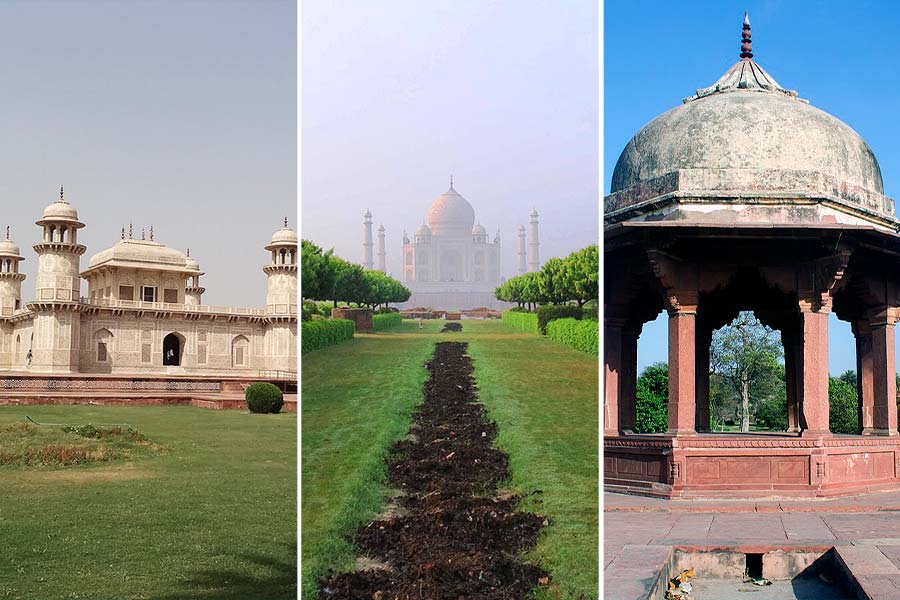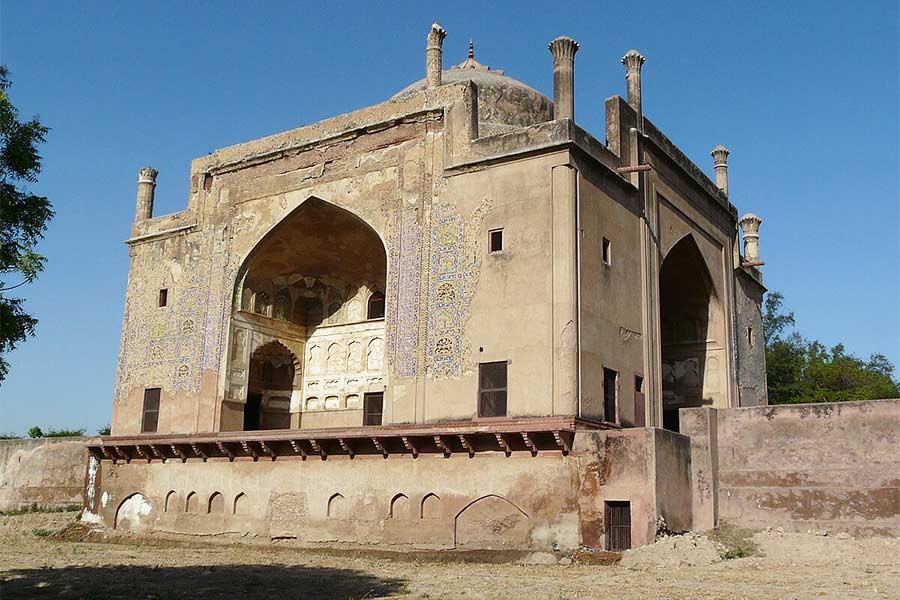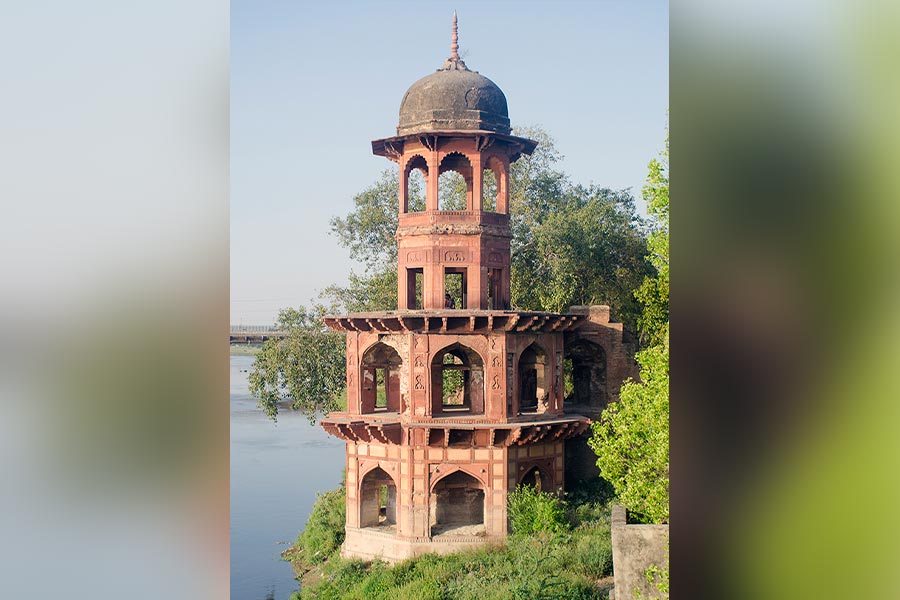News of the collapse of one of the Mughal-era turrets that were once a part of Zohra Bagh or Jahanara Bagh in Agra on October 29 took me back to my visit to the city on the banks of the Yamuna in March this year.
The Taj Mahal ticked off my list, I had decided to explore the unseen Agra that morning. I headed for the opposite bank of Yamuna. The riverbank opposite the Taj once housed about a dozen Mughal gardens, complete with pavilions, water channels and fountains. But only traces of these remain and the few that have survived have been heavily encroached.
The area is dotted with over a dozen monuments protected under the Archaeological Survey of India (ASI), of which three are ticketed monuments — Aram (Ram) Bagh, Tomb of Itmad-ud-Daulah and Mehtab Bagh. The marble Tomb of Itmad-ud-Daulah is the most visited of the three for its beautiful coloured inlay work and is often described as the jewel box. It has become a favourite haunt for influencers shooting reels.

The riverbank opposite the Taj is dotted with over a dozen monuments protected under the Archaeological Survey of India (ASI), of which three are ticketed monuments — Aram (Ram) Bagh, Tomb of Itmad-ud-Daulah and Mehtab Bagh Wikimedia Commons
But there are many more monuments standing on the bank of Yamuna. These include the Chini ka Rauza. The massive tomb houses the mortal remains of Afzal Khan, an important officer in the courts of both Jahangir and Shah Jahan. The exterior of the sandstone tomb is decorated with beautiful blue Chinese porcelain and hence the name (chini coming from China). Sadly, only traces of the Chinese tiles remain. The tomb stands in a walled complex complete with a gateway and corner turrets (chhatri).

there are many more monuments standing on the bank of Yamuna including the Chini ka Rauza Wikimedia commons
The north-western turret offers a grand view of the meandering Yamuna and visible further north is a beautiful towering ornate chhatri overlooking the bend in the river. I looked up Google Maps and found that it was unmarked and there were no roads leading to the beautiful chhatri. I asked some local people about the approach road but no one seemed to know. I had to give it a skip and continue with my exploration of other monuments. Little did I know then it would be my last view of the ornate chhatri.
My tweet lamenting the collapse was also retweeted by historian and author William Dalrymple, who also posted about the loss himself.
The collapsed chhatri was once a part of Zohra Bagh (Jahanara Bagh), one of the lost Mughal Gardens of Agra. The garden was initiated by Mumtaz Mahal. After her death, it was inherited by her daughter Jahanara. The garden has faced centuries of neglect and a large chunk of it was lost way back in the 19th century. In the 1990s, one of the two ornate chhatris that stood on the banks of Yamuna was lost to the construction of a highway. From the 1990s to October 29, 2024, the ornate chhatri was the only significant standing structure of the once-famed Zohra Bagh.
Rameen Khan, a Delhi-based heritage enthusiast who runs an Instagram page City Tales and conducts heritage walks and tours across India and beyond, remembers visiting the chhatri in 2019. “The approach to the chhatri was through a nursery that housed two small pavilions from Zohra Bagh. Both of them were heavily encroached. A dirt road led to the river bank where the towering chhatri stood. Although the structure looked stable, there was decay and neglect everywhere.”
Kaleem Ahmed Qureshi, the co-founder of Agra Heritage Walk, described the collapse of the chhatri as a big blow. “The collapsed chhatri was never part of our regular tours but its collapse is a big blow to the city's heritagescape. It represents the systematic negligence of lesser-known monuments as well as the crumbling economy of people living around these monuments. Government intervention, local awareness and decentralisation of tourism from specific monuments are the only way of saving these monuments."
Historian and author Rana Safvi blamed the ASI for the collapse while recalling her visit to the chhatri. “The particular burj always smelt terrible. The stench and its loneliness plus the fact that neglected monuments become ideal for adda (gathering spot) is what prevented me from going inside and exploring it thoroughly as I do for other monuments. The ASI should have taken cognisance much earlier as this chhatri had been crumbling over the years. Having said that, the ASI is understaffed in proportion to the monuments under its care. Especially in Agra which has so many important monuments, there should be more investment in preservation and conservation.” She stressed on the need for creating awareness among local people apart from starting government initiatives. “Heritage walks, articles, local campaigns by heritage lovers can help raise awareness.”
The chhatri of Zohra Bagh has collapsed but several historical structures across the country are on the verge of collapsing. A combined effort by the government and people is required to save such priceless heritage. Public-private partnerships, CSR funds from corporates, public awareness and proper usage of social media are all required to prevent further loss.


